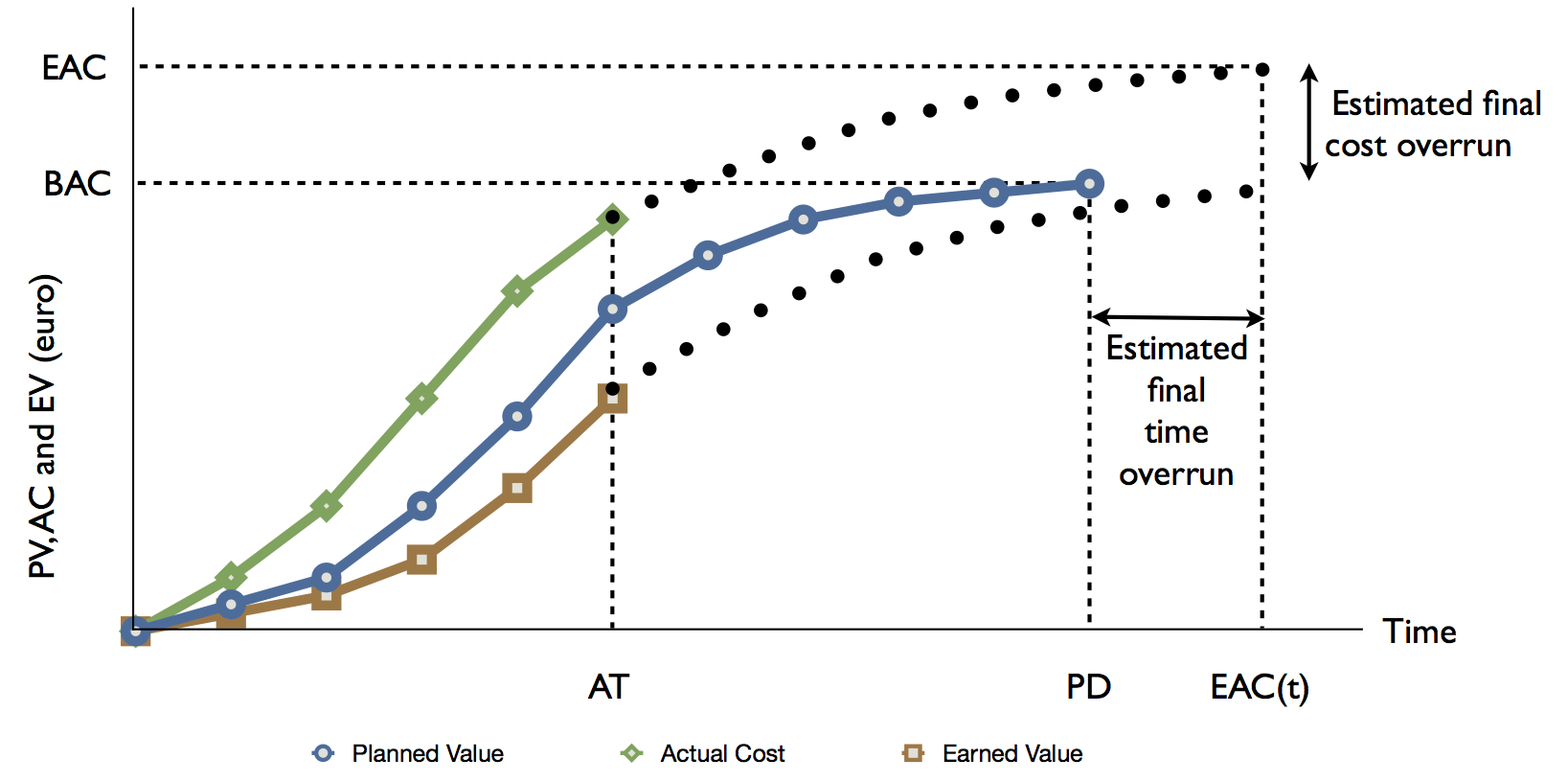Earned Value Management: Forecasting project outcome
Submitted by Mario Vanhoucke on Mon, 12/12/2011 - 17:32

Controlling a project is key to the success or failure of the project. Earned Value Management (EVM) is a well-known technique to control the time and cost performance of a project and to predict the final project duration and cost. It is an easy tool to generate early warning signals to timely detect problems or to exploit project opportunities. An overview of the EVM metrics is given in “Earned Value Management: An overview” and the formulas are summarized in “Earned Value Management: The EVM formulary”.
In this article, the EVM forecasting approach to predict the final project duration and cost, given the current project performance, is discussed. The basic assumption of project forecasting in EVM is that the current project performance, measured by the SPI and SPI(t) metrics for time and the CPI for cost, is representative for future performance and is therefore used to predict the final duration and cost of a project. The general abbreviations to forecast time and cost are as follows:
- Expected At Completion - Cost (EAC): Forecast of total project cost at the current status date, which might be different from the Budget At Completion (BAC).
- Expected At Completion - Time (EAC(t)): Forecast of final project duration at the current status date, which might differ from the baseline Planned Duration (PD).
In this article, three main topics on EVM forecasting are discussed as follows:
- General cost forecasting formula
- General time forecasting formula
- Performance factor
Cost forecasting EAC
Forecasting the final cost of the project is key to the success or failure of a project since it allows to take corrective actions when the predicted EAC exceeds a certain threshold. This forecast is based on the actual costs already spent and a prediction of the future spendings for the remaining portion of work to be done. The general forecasting formula is equal to:
EAC = AC + PCWR
with
AC: The actual cost at the current time moment (i.e. AT = actual time)
PCWR: Planned Cost of Work Remaining as an estimate for the future
More information on the cost forecasting formulas and techniques are discussed in “Earned Value Management: Forecasting cost”.
Time forecasting EAC(t)
Forecasting the final duration of the project is key to the success or failure of a project since it allows to take corrective actions when the predicted EAC(t) exceeds a certain threshold. This forecast is based on the actual time already spent on the work done and a prediction of the duration of the remaining portion of work to be done. The general forecasting formula is equal to:
EAC(t) = AT + PDWR
with
AT: The actual time moment (i.e. today)
PDWR: Planned Duration of Work Remaining
More information on the time forecasting formulas and techniques can be found in “Earned Value Management: Forecasting time”.

Figure 1: Forecasting cost (EAC) and time (EAC(t))
Figure 1 displays the three key metrics, Planned Value, Actual Cost and Earned Value of a project at a certain current moment in time AT. The EV is equal to the PV at the end of the project and hence, the current EV (which shows that the project is late) is used to predict at what moment in time the EV equals PV. The total project duration prediction is shown in the figure by the EAC(t) which shows the project is expected to be late. Likewise, the current actual costs are higher than the EV, which shows a budget overrun at the current moment AT. The AC is expected to grow at the same rate until the project is expected to be finished, which results in an EAC which shows an expected final cost overrun.
Performance factor PF
The performance factor (PF) is a way to express that the rate in which the increase in AC or EV (the dotted lines in figure 1) occurs might depend on the assumption of the performance of the remaining work to be done. Consequently, it refers to the assumption about the expected performance of the future work PDWR or PCWR, as follows:
- PF = 1: Future performance is expected to follow the baseline schedule.
- PF = SPI or SPI(t): Future performance is expected to follow the current time performance.
- PF = SCI or SCI(t): Future performance is expected to follow the current time and cost performance.
with the Schedule Cost Index defined as SCI = SPI * CPI or SCI(t) = SPI(t) * CPI.
All these methods provide an estimate for the total project duration and cost, and offer a range of possibilities and hence a lower and upper bound on your predicted total time and cost. The choice of a specific forecasting method depends on the project, the expertise of the project manager and many other unknown factors.
© OR-AS. PM Knowledge Center is made by OR-AS bvba | Contact us at info@or-as.be | Visit us at www.or-as.be | Follow us at @ORASTalks


